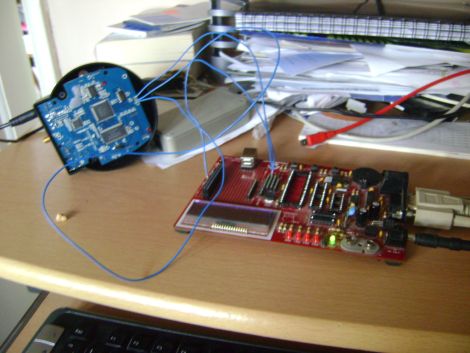
As many of us do, [Steaky] serves as a kind of on-call help desk for his family. His father in law recently contacted him because his pan and tilt webcam died, and he wanted to see if it could be fixed. Never turning down a challenge, [Steaky] decided to give it a shot.
He ended up having to disassemble it since the camera was completely unresponsive, and what he found inside piqued his interest. The no-name camera sported an ARM microprocessor at its core, and it seems that some of its pins were damaged due to a poorly designed case. He figured resoldering the pins would do the trick, but that wasn’t the end of his adventures.
As he dug deeper into the device, he found that the camera essentially killed itself, reading and writing data to the wrong places due to the damaged pins on the processor. After plenty of searching around, he was able to find a somewhat compatible firmware image, though not everything worked properly.
His father in law was so impressed with his work that he asked for the camera back, even though [Steaky] hadn’t fully repaired it yet. While he bid the camera goodbye, we’re pretty sure he’d be more than happy to reclaim it for a few days if any of our readers had some additional insight or resources that might help him finish the job.















Woulda been nice if the link above actually led to the FIRST of the articles, instead of the last. For those interested, the article starts at: http://www.steaky.co.uk/?p=39
I enjoyed that writeup. great job!
This sounded like quite the adventure. Though, if I was to venture a guess, it seems like it might be missing the config and init file for the com bus. That, or the security of the chip was compromised and the broken pin was the result of an the pin being pulled high on an incoming high(as in power) pulse.
the issue was that somehow some damage occured to 2 ARM address pins. this meant that position 0x7f030000 was read and written to instead of 0x7f010000 corrupting the linux partition. unfortunatly there is nothing that software could do to save this. i reflowed the damaged pins and could read and write correctly.
Is it possible that the damage was caused by an surge or short?
There weren’t any scorch marks indicating a surge and it looked like the shorted pins were caused by something pressing on them
it looks like a FOSCAM camera. there are some hacks out there and it uses a ARM microprocessor